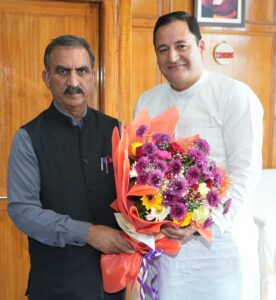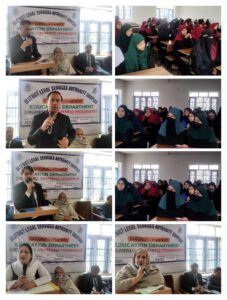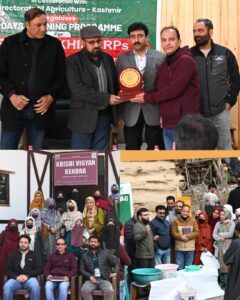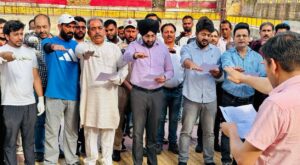PM Modi, Amit Shah’s commitment transforms Jammu and Kashmir’s landscape
Srinagar (Jammu and Kashmir) [India], June 19 (ANI): The commitment of Prime Minister Narendra Modi and Union Home Minister Amit Shah to build “Naya Jammu and Kashmir” has transformed the landscape of the Himalayan region.
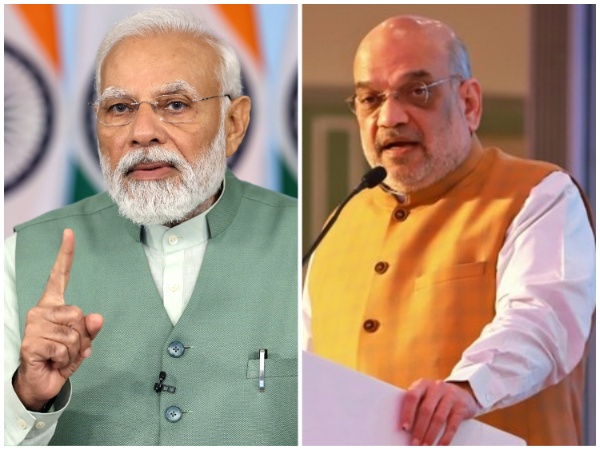
The completion of languishing projects, the implementation of new ones, and adherence to the principles of “Gati” and “Pargati” have brought peace, prosperity, and progress to Jammu and Kashmir post abrogation of Article 370.
The success achieved in infrastructure development has not only improved the physical landscape of the region but has also shattered false narratives, empowering the people of the Union Territory to envision a brighter future.
After August 5, 2019, when the Centre announced its decision to scrap J-K’s special status and bifurcate it into two Union Territories, the government has taken unprecedented strides to boost connectivity infrastructure for the rapid economic transformation of the region.
During the past three years, the government has built express highways and improved airports, and Kashmir is all set to get connected with the rest of the country by train by next year.
The work on the 272-km Udhampur-Srinagar-Baramulla Rail Link (USBRL) project has entered its last phase. Its completion would provide all-weather connectivity to Kashmir with the rest of the country. The project is slated to be completed by next year.
Once completed, USBRL, with 38 tunnels, including the longest 12.77-km T-49 tunnel, will signify a marvellous engineering feat for India. The world’s highest Chenab Bridge (1,315 mt) and the first cable-stayed rail bridge add to the beauty of this rail connectivity project.
The widening work of the strategic Jammu-Srinagar National Highway (NH-44) also is nearing completion. The project was divided into six parts, of which four have been completed.
The work is going on the last two phases, the Banihal-Ramban road (36 km) and Ramban-Udhampur road (43 km).
This 79 km-long four-lane stretch of the National Highway will have 14 tunnels, including the recently opened Panthyal tunnel, between Banihal-Ramban-Udhampur. The work on the strategic highway is scheduled to be completed by 2024 end.
Another four-lane Greenfield Expressway, connecting Delhi-Katra is also being constructed. It will reduce the distance between the two cities by 58 kilometres. It’s a part of 32 ‘Green Express Highways’ being built across the country.
This 670 km four-lane Green Field Expressway from Delhi to Vaishno Devi Dham, Katra is slated to be completed by December 2023 at a cost of Rs 37,524 crore.
Pertinently, the road construction in Jammu and Kashmir picked up pace after 2019. In three years, travel time between major destinations across J-K has reduced considerably.
According to the officials, more than 7000 km of road length has been built during the past 3 years. More than 170 bridges have been constructed to strengthen the transport system and more than 8000 km of road length has been macadamized which used to be around 2500-3000 km previously.
Road and tunnel infrastructure has been prioritized and around one lakh crore is being spent to build a robust road network.
In 2021-22, Jammu and Kashmir set a new record of constructing 6,450 kms of road length and achieved third rank in the target of longest road length in the country.
Till 2019, six kms of road length was constructed per day which has increased to 20 km per day during the past few years.
Under the Pradhan Mantri Gram Sadak Yojana, Jammu and Kashmir ranks fourth in the country.
Notably, the Union Ministry of Rural Development had sanctioned 3,347 schemes under the PMGSY-I to be executed in 12 phases envisaging the construction of 18,432.79 km of roads costing Rs 1,19,646.76 crore to provide connectivity to 2,148 habitations.
Under the PMGSY-II, 107 schemes (704.55 km) have been sanctioned costing Rs 790.49 crore.
Under the PMGSY-III the government has approved Rs 1,357 crore for J-K to build 1,276 km of road length.
The PMGSY-III is yet another milestone in the rural connectivity of J-K.
The work on the 78 Kms four-lane Srinagar ring road project is slated to be completed in 2023-24.
With the construction of this ring road worth Rs 4,660 crore people, coming from Baramulla, Kupwara, Bandipora, Gurez, Kargil, and Leh, will not have to come inside Srinagar city. This will reduce traffic congestion and pollution in the city.
A proposal has been moved for the construction of a tunnel between Sheshnag and Panjtarni on the Amarnath Yatra route.
It would reduce the yatra time from the current three days to just nine hours.
According to the officials, a 110-kilometre road from Khanabal to Panjtarni will be constructed for the ease of Amarnath pilgrims at a cost of Rs 5,300 crore.
The DPR for a 73 km stretch from Khanabal to Chandanwari and a 37 km stretch from Chandanwari to Baltal via Panjtarni at a cost of Rs 3,500 is under process.
A 10.8-kilometre-long tunnel will be constructed between Sheshnag and Panjtarni.
Meanwhile, the construction of a tunnel at Pir Ki Gali on Mughal Road, connecting Poonch in the Jammu region to Shopian in Kashmir is also on the cards. The Rs 6,000 crore project includes the Rs 5,000 crore tunnel at Pir Ki Gali, which comprises the construction of an all-weather road.
Another key achievement of the PM Modi-led regime in J-K has been the completion of languishing projects. These projects, which had been stalled for years, hindered the progress of the region. Recognizing their importance, the government undertook efforts to fast-track their completion.
The unprecedented speed with which these projects were executed reinvigorated the development landscape of the Union Territory. From the construction of schools, hospitals, and community centers to the renovation of existing infrastructure, the completion of these projects improved the quality of life for the people of J-K.
In addition to completing pending projects, the government has also taken the initiative to implement new projects that cater to the diverse needs of the region.
PM Modi-led regime has demonstrated a strong commitment to deliver results quickly and efficiently by implementing the mantra of “Gati” (speed) and “Pargati” (progress).
The government has removed unnecessary obstacles and encouraged public-private partnerships.
The pace of infrastructure development in ‘Naya J-K’ has been accelerated.
This approach has not only transformed the physical landscape of the region but has also fostered an environment conducive to investment and economic growth.
The remarkable progress achieved in J-K under the PM Modi-led regime has shattered false narratives propagated by a handful of people with vested interests. These individuals sought to keep the pot boiling by spreading misinformation and fueling unrest.
However, the tangible results of infrastructure development in the Union Territory have debunked their claims.
The improved quality of life, enhanced connectivity, and economic growth have silenced the critics and stand testimony to the transformative power of development under the visionary leadership of PM Modi and Union Home Minister Amit Shah.

